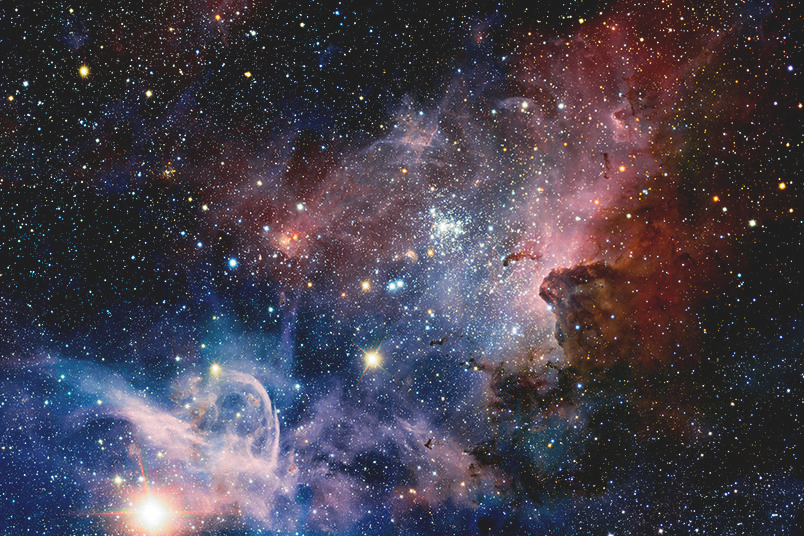Apr 29 2020
Under the guidance of Professor Hendrik Hildebrandt, cosmologists from Ruhr-Universitaet-Bochum (RUB) have gained a new understanding of the structure and density of matter in the Universe.
 The Universe contains unimaginably many objects. Cosmologists are trying to weigh them all. Image Credit: © ESO/T. Preibisch.
The Universe contains unimaginably many objects. Cosmologists are trying to weigh them all. Image Credit: © ESO/T. Preibisch.
Many years ago, Professor Hildebrandt participated in a research consortium that had highlighted the inconsistencies in the data between different teams. The values that were established for the density and structure of matter varied based on the measurement techniques.
Now, a recent analysis, which involved additional infrared data, has highlighted these differences even more. Such differences could denote that this is the actual error in the Standard Model of Cosmology.
An article on Professor Hildebrandt’s study was published by Ruhr-Universität Bochum’s science magazine—Rubin. The new analysis by the research consortium, known as Kilo-Degree Survey, was also published in the Astronomy and Astrophysics journal in January 2020.
Two Methods for Determining the Structure of Matter
Now, based on the cosmic microwave background, researchers can estimate the structure and density of matter in the Universe. Cosmic microwave background is radiation that was produced soon after the Big Bang and can be quantified even today. The Planck Research Consortium had employed this same method.
Using the gravitational lensing effect, the Kilo-Degree Survey group together with several other research teams, established the matter’s structure and density. In the gravitational lensing effect, high-mass objects deflect the galaxies’ light, causing these galaxies to emerge in a twisted form in a different site than they actually are when observed from Earth.
On the basis of these distortions, cosmologists can infer the mass of the deflecting objects and eventually establish the Universe’s overall mass. But to achieve this, cosmologists should know the distances between the deflecting object, the light source, and the observer, among many other things. With the aid of redshift, the scientists were able to determine these distances; the term redshift refers to the light of remote galaxies arriving on Earth and then moving towards the red range.
New Calibration Using Infrared Data
To find out the distances, cosmologists generally capture the galaxies’ images at different wavelengths—for instance, one in the red, one in the green, and one in the blue range. They subsequently established the galaxies’ brightness in the individual images. To find out the distance more accurately, Professor Hildebrandt and his research team also included many other images from the infrared range.
Earlier analyses have already demonstrated that the microwave background data, obtained from the Planck Consortium, systematically differed from the data obtained from the gravitational lensing effect. Based on the data set, the deviation was practically evident, but it was most evident in the Kilo-Degree Survey.
Our data set is the only one based on the gravitational lensing effect and calibrated with additional infrared data. This could be the reason for the greater deviation from the Planck data.
Hendrik Hildebrandt, Heisenberg Professor, Ruhr-Universitaet-Bochum
Professor Hildebrandt is also the head of the RUB research group Observational Cosmology in Bochum.
To check this inconsistency, the researchers used a similar calibration to assess the data set obtained from another research consortium called the Dark Energy Survey. Consequently, these values also differed much more strongly from the values provided by the Planck Consortium.
The Debate in Expert Circles
The researchers are now debating whether the difference between the data sets actually points to the inaccuracy of the Standard Model of Cosmology.
The Kilo-Degree Survey group is already working on another analysis of a more detailed data set that can potentially offer a better understanding. This analysis is anticipated to offer even more accurate data on the structure and density of matter in spring 2020.
Journal Reference:
Hildebrandt, H., et al. (2020) KiDS+VIKING-450: Cosmic shear tomography with optical and infrared data. Astronomy and Astrophysics. doi.org/10.1051/0004-6361/201834878.